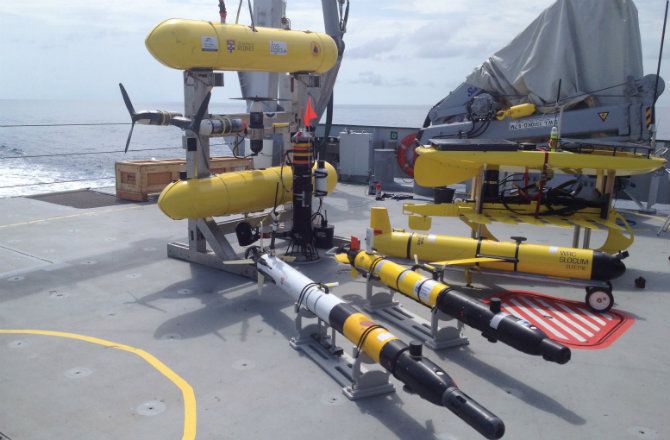No Humans Needed: Underwater Robots Make Own Decisions

The ocean depths are a notoriously treacherous environment for human beings. As such, robots and remote control vehicles have been used for decades to map and monitor underwater environments.
The trouble is that robots have to be programmed to do what they do. Even simple tasks, when performed underwater, require a lot of time and attention from engineers, who must write scripts for each particular job. There’s got to be a better way, right? Right.
DNews: Get A Glimpse Inside A Robot’s Brain
A research initiative at MIT is currently addressing this issue with a new programming approach that gives robots more cognitive capabilities, allowing them to — for lack of a better term — figure stuff out on their own. A robot crew is assigned a certain high-level goal, then the bots work it out among themselves to determine the best way to accomplish the task.
In fact, the MIT approach is modeled after time-tested top-down command systems, and specifically inspired by the starship Enterprise from Star Trek. One robot acts as the captain, making high-level decisions, while other bots might serve as navigators, engineers or even doctors — repairing other bots.
Robot Reveals Sea Life Thriving Beneath Antarctic Ice
“We wanted to show that these vehicles could plan their own missions, and execute, adapt, and re-plan them alone, without human support,” writes MIT’s Brian Williams, principal developer of the mission-planning system, on the MIT project page. “We can give the system choices, like, ‘Go to either this or that science location and map it out,’ or ‘Communicate via an acoustic modem, or a satellite link.’”
Sign up for the Live Science daily newsletter now
Get the world’s most fascinating discoveries delivered straight to your inbox.
The approach is similar to a system Williams developed for NASA in the 1990s, which allows for certain autonomous functions on satellites, probes and other spacecraft. The MIT team recently tested the underwater system in waters off the coast of Australia, and plans an official presentation at in June at the International Conference on Automated Planning and Scheduling in Israel.
Originally published on Discovery News.













